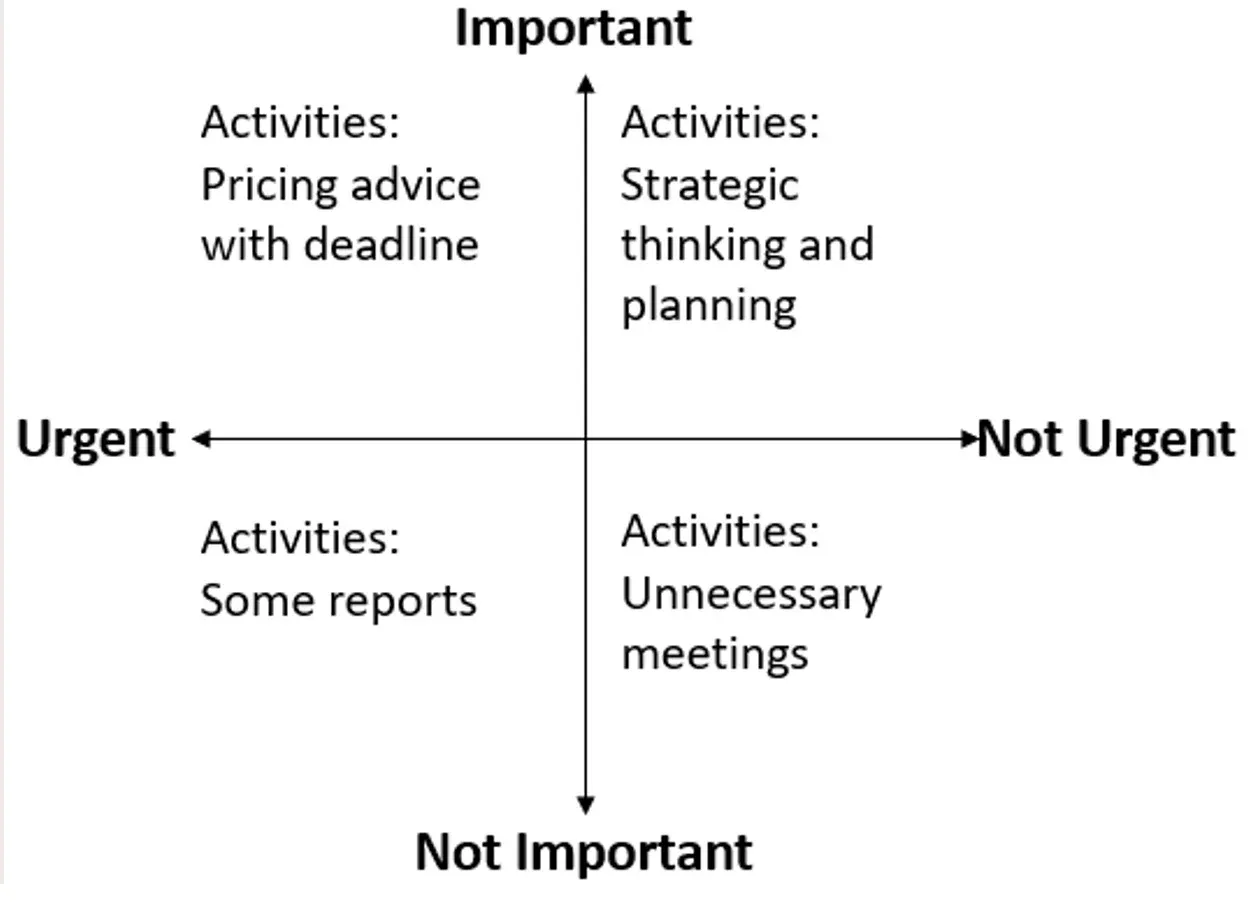Actuarial careers
Industry topics

Claim your CPD points
While the hours can be intense, it is possible to achieve a healthier balance between work and personal time. Such a balance can help you concentrate more on what's meaningful outside of your job.
This article offers techniques for task and time management to guide you towards a more balanced life, allowing you to return to the activities you love.
To maximise efficiency, it's important to understand what goals you want to achieve, whether finishing work tasks, longer-term projects, or personal development goals, such as learning a new skill or finishing a book. The "SMART" (Specific, Measurable, Achievable, Relevant and Time-based) goal-setting technique is useful for creating clear objectives.
For example, a regular BAU task, such as finalising a quarterly APRA return, can be turned into a "SMART" goal:
A longer-term goal can feel difficult to achieve; it can be easy to lose track of progress or head down the wrong direction. To prevent this, break down the overarching goal into smaller, more achievable, short-term targets. This helps you to:
For example, a week-long project can be broken down into shorter-term targets by doing the following:
Once you've outlined your short-term goals, you can create efficiencies by prioritising the tasks required to achieve them. How? Through creating, then prioritising, a to-do list.
A proven technique to prioritise tasks is the Eisenhower Matrix, popularised by Stephen Covey in his book The 7 Habits of Highly Effective People.
This technique categorises tasks into a two-by-two matrix, as shown below:

Urgent and Important: These tasks have a tight deadline; for example, that pricing advice that needs to go out tomorrow - these tasks you need to do immediately.
Not Urgent and Important: These tasks need to be done but may not have a set deadline; for instance, strategic thinking or planning - these tasks, you can defer.
Urgent and not important: Tasks that are urgent but can be delegated or even automated.
Not urgent and not important: These tasks are not time-sensitive and don't add much value. In some cases, these tasks can be dropped.
So far, we've discussed techniques to regain more time in the day to enjoy valuable pursuits outside of work. However, to improve the quality of this additional time, it's essential to understand the Zeigarnik effect.
Named after the psychologist Bluma Zeigarnik from the early 20th century, this phenomenon describes how incomplete tasks can dominate your attention 1 .
Have you ever found yourself deep in thought about a lingering task after wrapping up your workday? That's the Zeigarnik effect in play.
Our minds, preoccupied with unfinished business, are susceptible to a persistent mental tug-of-war, often diminishing the quality of our non-work time. Fortunately, there are ways to ease your mind that don't involve working longer hours.
In his book Deep Work , bestselling author Cal Newport suggests the shutdown ritual. This simple yet effective strategy involves:
Through this ritual, no task is forgotten, and we can mitigate the chance of work thoughts intruding on our personal time, improving peace of mind and clarity in this downtime.
In the face of a rapidly changing professional landscape and increasing demands on actuaries, it is important for us all to focus on achieving a healthier work-life balance.
By harnessing effective time management techniques and enhancing the quality of our personal time, we not only make the most of our hours, but we can engage more deeply in the activities we love. Importantly, these techniques aren't exclusive to our work; they can enrich other aspects of our daily life, allowing us to use more time to chart a path towards a more fulfilling life!
[1] The Zeigarnik Effect and Thoughts About Unfinished Work (verywellmind.com)